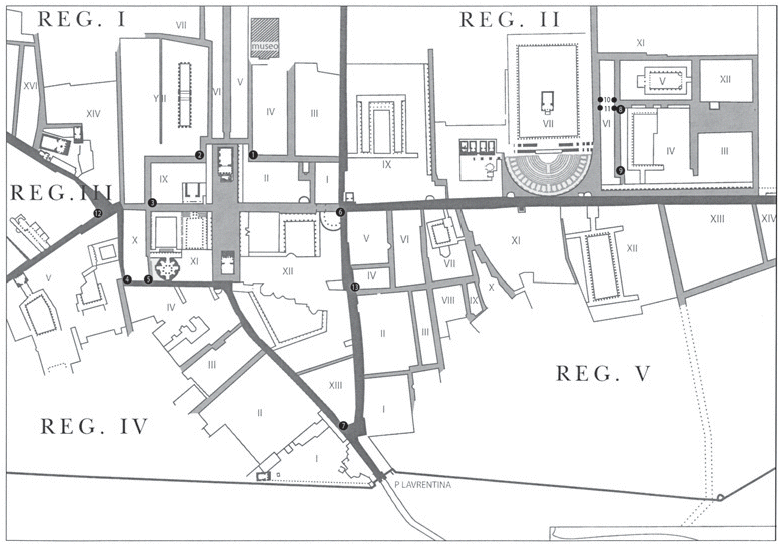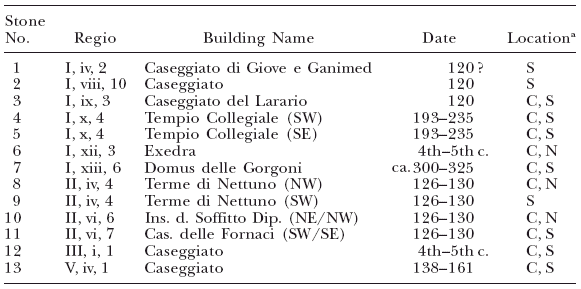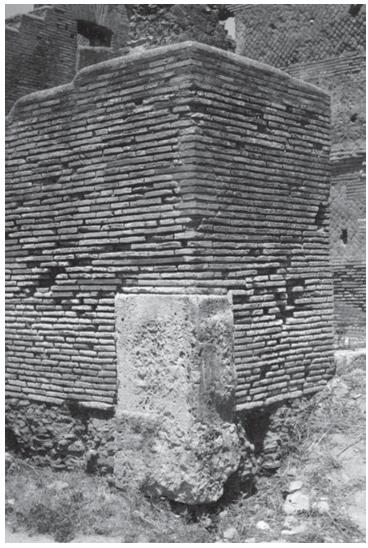Summary of previous research - large cornerstones
In the American Journal of Archaeology Van der Meer further discussed a number of large cornerstones (corner bases), that are found at or almost at street level in the facades of buildings and inside buildings. He proposes two functions for these stones. The stones have often been regarded as buffer stones, but there are strong indications that many were boundary stones used for the layout of insulae. Cornerstones in small streets, constricted parts of streets, projecting buildings, and entrances of buildings were used as warning signals for passing traffic.
Van der Meer argues that these cornerstones cannot have been buffers, because no clear traces of damage are present and in some cases there was no danger of traffic, because the corner with a stone is flanked by a sidewalk. Also, countless buildings did not have a cornerstone. Many had a layout function, marking boundaries, he suggests. These were the boundaries of insulae, and the stones guaranteed enough space for a street. Perhaps they also marked the boundaries of the five regiones into which Ostia had been divided in antiquity (there is no further information about the boundaries of these regions; archaeologists have divided Ostia also in five regions, but a relation with the ancient regions can only be accidental).

Position of the cornerstones with a layout function - plan.
Van der Meer 2002, fig. 1.

Position of the cornerstones with a layout function - legend.
Van der Meer 2002, table 1.

A cornerstone in the House of Giove and Ganymede (I,IV,2).
Van der Meer 2002, fig. 2.
Van der Meer suggests that other large and low cornerstones served as a warning signal at dangerous, irregular spots. He mentions the following examples in facades and inside buildings:
- North-west corner of House IV,IV,7.
- Protruding piers on the northern part of Semita dei Cippi, between buildings I,XII,4 and V,V,3.
- Piers in a room at the south end of Via dei Vigili.
- The south-eastern pier of the House of the Millstones (I,III,1).
- The passage between the House of the Nymphaeum (III,VI,1-3) and Building III,III,2.
- Eastern and southern vestibule of the Barracks of the Fire Brigade (II,V,1-2).
- Forecourt of the Round Temple (I,XI,1).
- Curia (I,IX,4).
- Building III,I,5.
In some cases I do not understand what warnings were given by these blocks, for example the four blocks in the four corners of the vestibules of the Barracks of the Fire Brigade. It is interesting that there are four rooms with four blocks in the corners, not far from each other: in the Barracks, in a room at the south end of Via dei Vigili, and in the corners of the passage to the north of the House of the Painted Ceiling (II,VI,5-6) (the latter interpreted by Van der Meer as blocks with a layout function).